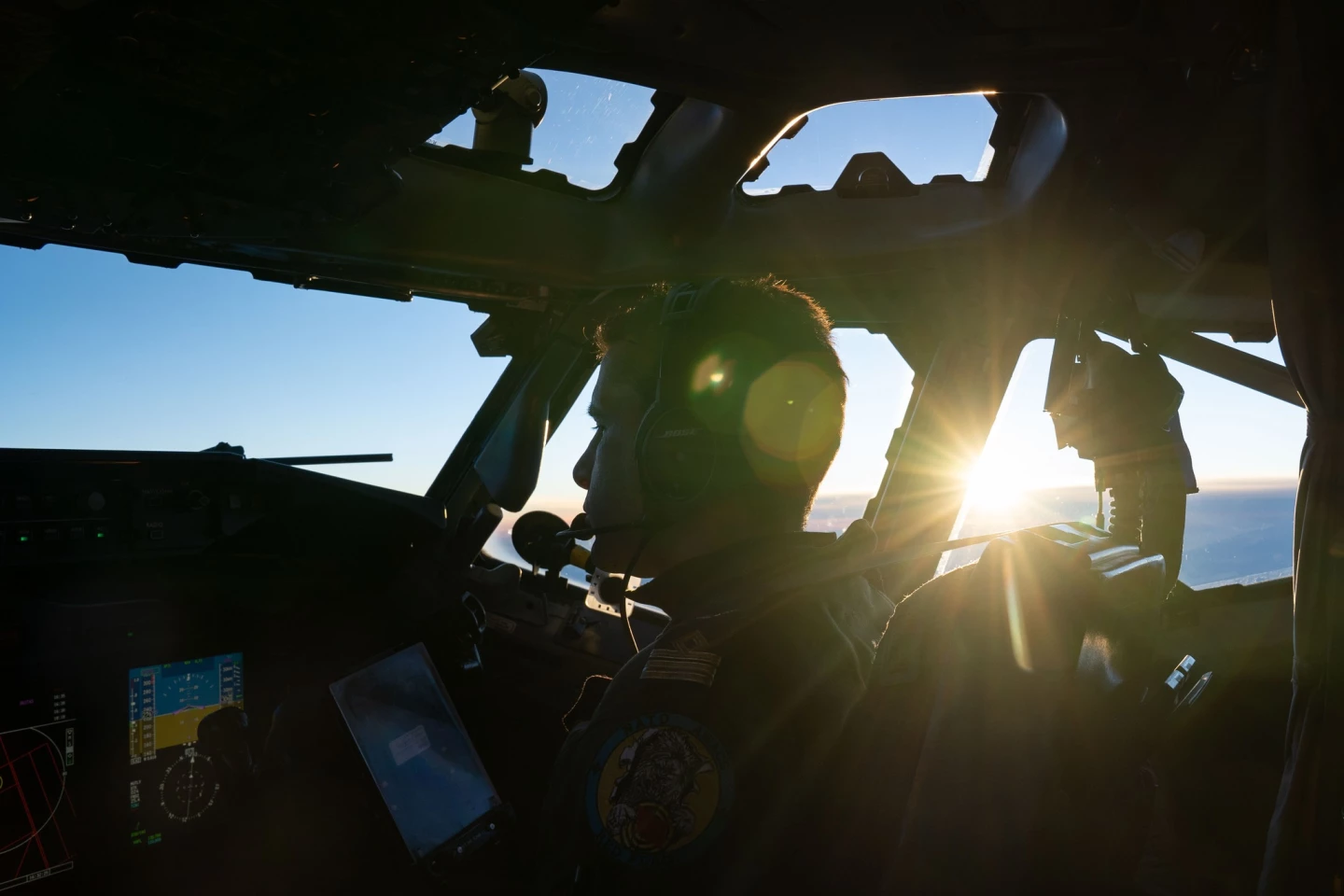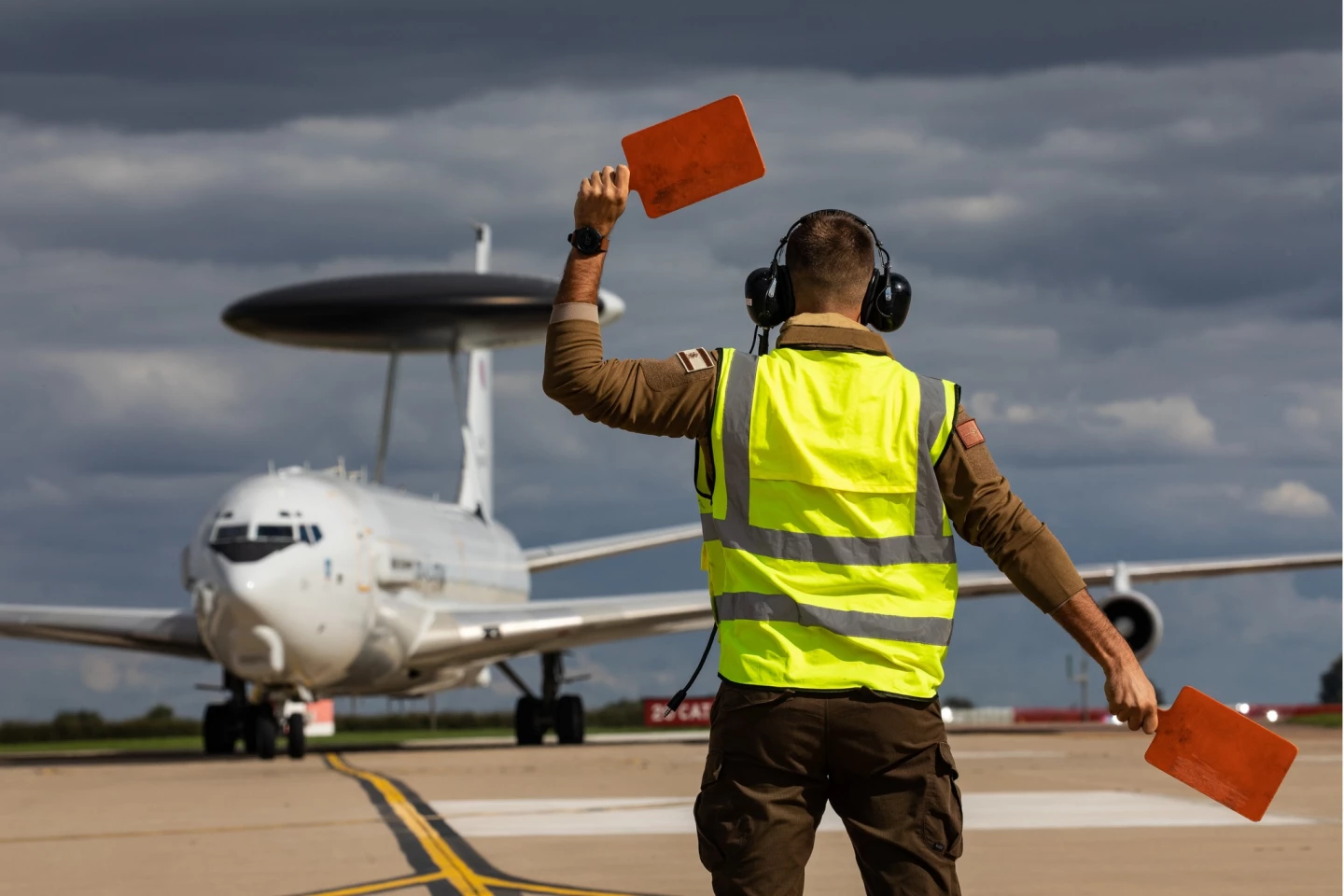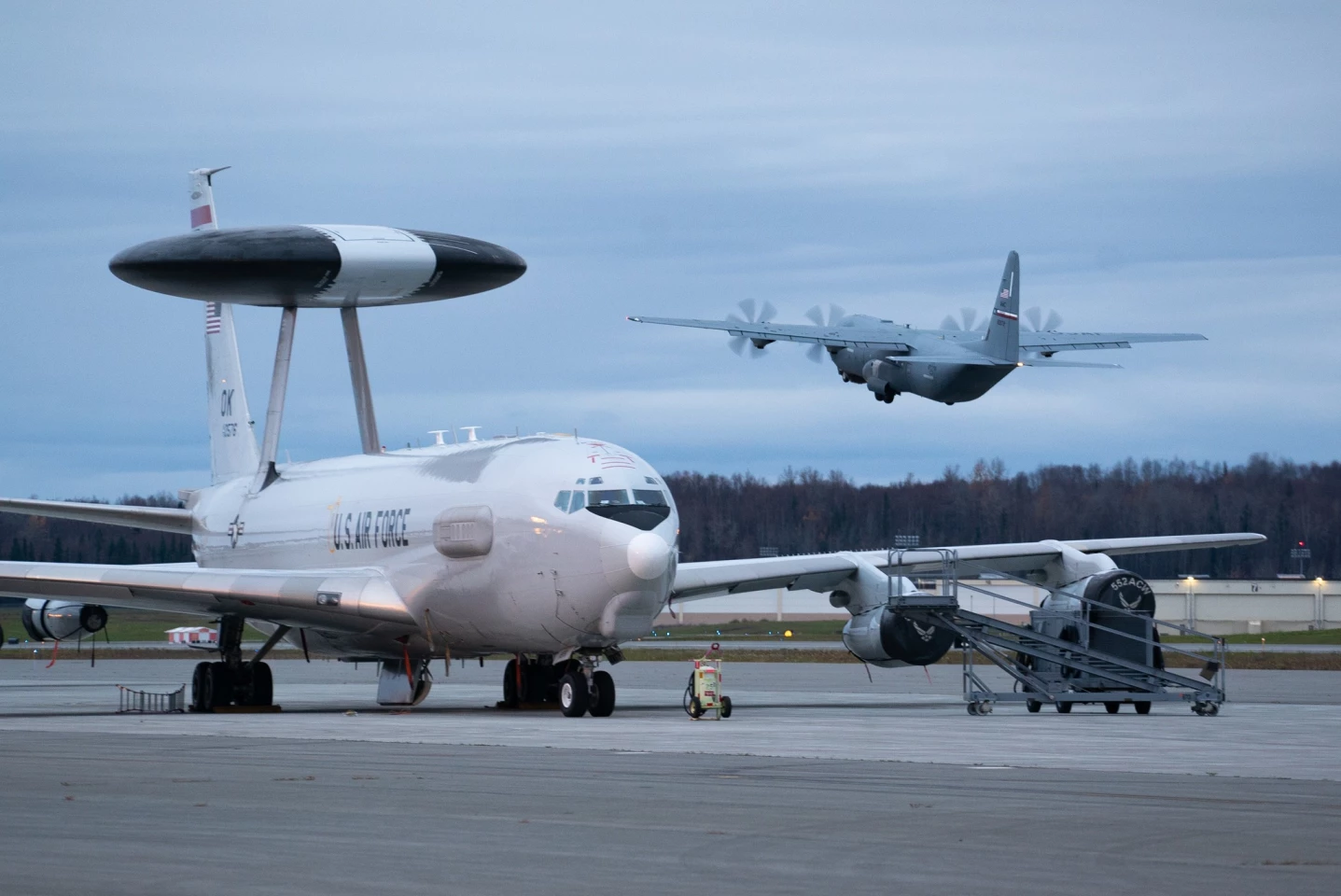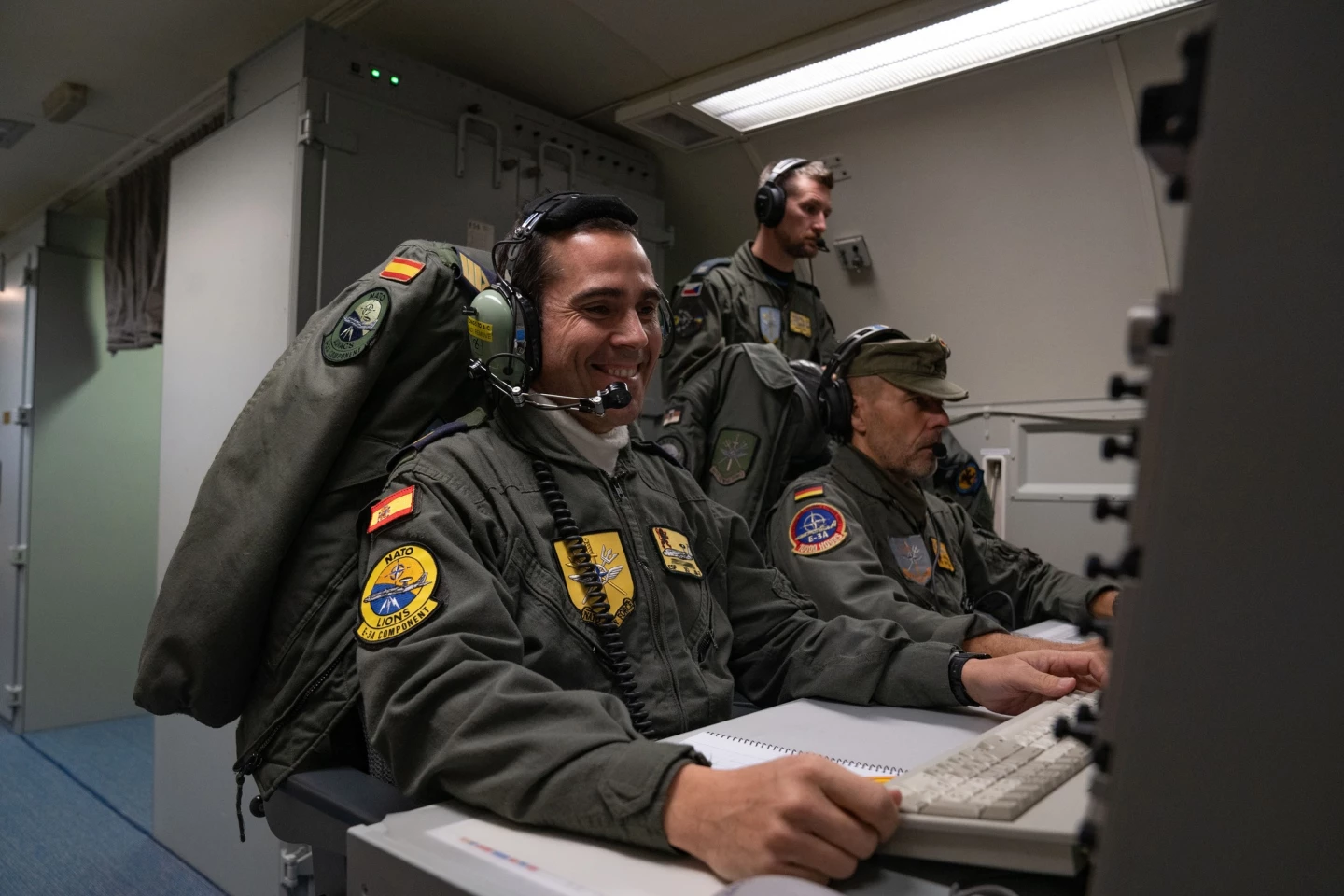The unpredictable nature of the conflict in Ukraine makes it a confusing one from the outside looking in, but Western powers are watching it unfold with intelligence resources that would have been unimaginable half a century ago. Here, New Atlas looks at a key component in these efforts – NATO's spy planes that serve as its eyes the sky.
Every day, a half a dozen jet aircraft in NATO livery patrol the skies somewhere over Eastern or Central Europe, the Norwegian Sea, or the Black Sea. They remain aloft for up to eight hours at a stretch. If need be, they can stay up indefinitely with tanker aircraft refueling them while in flight.
These aircraft never fly into Ukrainian or Russian airspace. Unless they are over international waters, they never directly see a Russian ship or aircraft. Though far from the war in Ukraine, they are always watching what is going on in the battle space and beyond.

Inside each gray fuselage is a highly trained crew of specialists sitting in front of state-of-the-art displays, showing streams of data from an array of passive and active sensors that are monitoring a bewildering number of events in the air and on the ground. Exactly what these military crews are looking at is highly classified, but they are carrying out a job that has revolutionized 21st century warfare.
The famous term fog of war describes the constant problem of conflict where military and political leaders must make literal life and death decisions based upon incomplete and often inaccurate information. However, modern technology has changed that, allowing advanced powers to gather an unprecedented amount of information about a battle theater in real time.
Though it's far from crystal clear what is going on at any moment while bluff, propaganda, and misinformation from both sides in the conflict muddy the waters, the Western nations have brought to bear a surveillance system over Ukraine that is constantly updating military and political leaders on the situation.

Exactly how extensive this intelligence gathering is can't be said with any certainty. Much of it is top secret and, as is often the case with intelligence, a surprising amount overlaps with civilian data-gathering in areas like satellite imaging, news monitoring, and cyber security. To put it at its simplest and broadest, the Ukraine conflict is being watched over by spy satellites, aircraft, internet monitors, electronic snoopers, news clippers, and even good, old-fashioned human spies among many other things.
Since it isn't likely that a full account of the intelligence network watching Ukraine will be made public until a good 30 years after the conflict ends, let's look at one of the most important assets, which is NATO's fleet of Airborne Warning and Control System (AWACS) flying surveillance and command centers, also known as E-3s, which are are watching over the invasion of Ukraine from hundreds of miles away.
NATO E-3 Sentry AWACS
NATO is a military alliance made up of 30 members in Europe and North America and because it's an alliance, most of its assets are owned and operated by the individual member states as part of their armed forces and are only shared with the organization. In contrast, the 14 AWACS aircraft of the NATO Airborne Early Warning and Control Force (NAEW&C Force) are owned outright by NATO, though operated by NATO military personnel seconded to the force and civilian specialists.

The aircraft of the NAEW&C Force is the Boeing E-3 Sentry, which is a modified Boeing 707 airframe powered by four TF-33-PW110A turbojet engines. It is instantly recognizable by the 30-ft (9-m) rotating radar dome set 11 ft (3.3 m) above the fuselage on two metal struts. Spinning once every 10 seconds, the beam from the dome has a range of 215 nm (247 mi, 400 km). This means that when the E-3 is flying at 30,000 ft (9,000 m) with its flight crew of three and mission crew of about 12, it can cover an area of 120,000 mi² (310,798 km²) which is about the size of Poland. According to NATO, three E-3s can overlap their beams to monitor the whole of central Europe.
The NAEW&C Force is operated by Belgium, the Czech Republic, Denmark, Germany, Greece, Hungary, Italy, Luxembourg, the Netherlands, Norway, Poland, Portugal, Romania, Spain, Turkey, and the United States. Britain's Royal Air Force has seven E-3Ds and participates in NAEW&C, though its aircraft remain entirely under RAF control and are crewed by RAF personnel. Meanwhile, France's four E-3s occasionally provide assistance to NAEW&C.
This makes for a formidable enough spy plane wing – especially when the US Air Force has 31 E-3s that it can bring to bear as needed. In addition, NAEW&C is supplemented by other spy planes, like fighter aircraft reconfigured for reconnaissance and the RAF 135 Rivet Joint observation aircraft that was in the vicinity of a Russian Su-27 fighter when it launched a missile over the Black Sea – an incident that Moscow calls an "accident."

Beginning operations in 1982, the purpose of the fleet was originally aerial surveillance at a time when air defenses had become so sophisticated that high-flying aircraft were too vulnerable to penetrate enemy air space. This meant installing increasingly advanced and miniaturized radar systems on aircraft where they could use high altitude as a vantage point for detecting and tracking low-flying aircraft and missiles from a distance.
The mission
Over the past several decades, the E-3 AWACS platform has evolved into an integrated command and control battle management tool that is equipped with subsystems for surveillance, identification, weapons control, battle management, and communications that turn it into a flying air traffic control and military command center that is capable of all-altitude and all-weather surveillance of a battle space, identification of "Friend or Foe," and early warning of enemy actions during joint, allied, and coalition operations. In addition, it can look down while eliminating ground clutter that would confuse other radar systems and its computers can monitor the entire air traffic in range of its radar.
These capabilities allow the E-3 to carry out a variety of missions, including maritime operations, close air support, airspace management, combat search and rescue, disaster relief, embargo enforcement, and counter-piracy operations. Information gathered is sent directly to major command and control centers on the ground or aboard ships. With operating bases in Germany, Turkey, Greece, Italy and Norway, the E-3 fleet can quickly move into any area of Europe to monitor emerging situations.

Having undergone a major refit in 2018 with enhanced networking capability, the NATO E-3 wing is expected to keep operating until 2035 when it will be replaced by a yet-to-be-determined system that may include robotic aircraft and high-altitude sub-satellites.
In the meantime, as the war in Ukraine develops, the E-3s will keep NATO leaders abreast of troop movement, drone flights, cruise missile launches, and many other incidents that will not only provide a fuller and more accurate picture than in the past, but will also help to instill in those leaders a sense of confidence that will, hopefully, help prevent rash decisions based on the confusion from the fog of war.
The video below profiles the features of the NATO E-3 Sentry spy plane.













